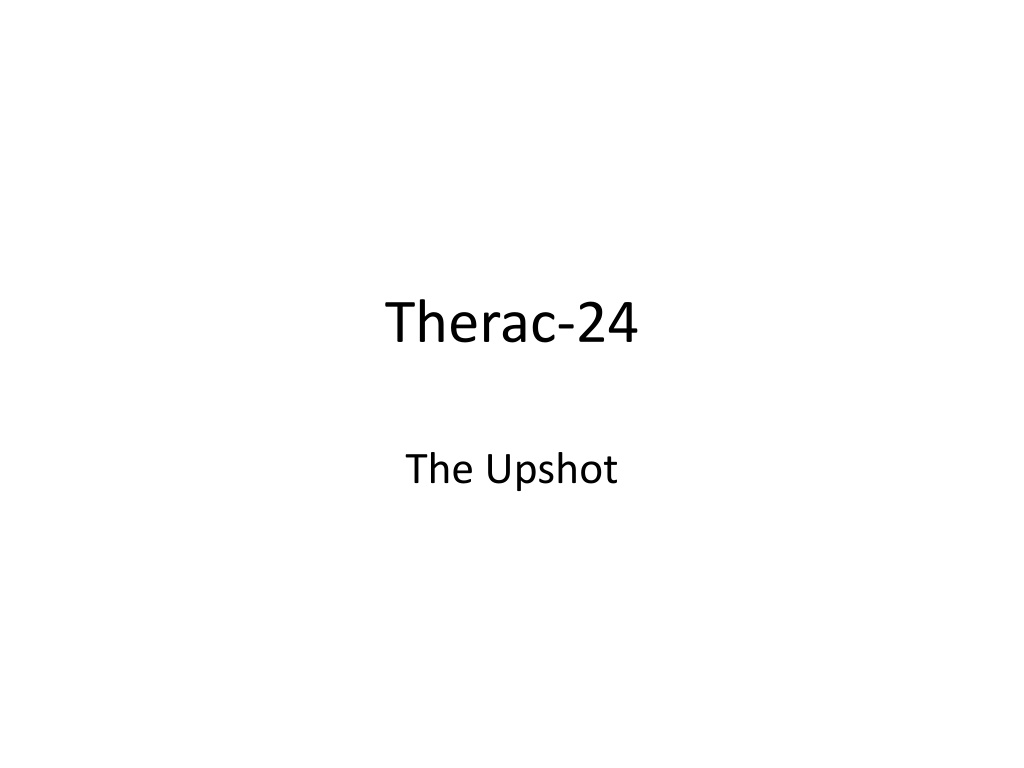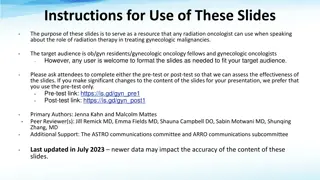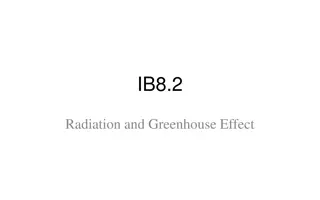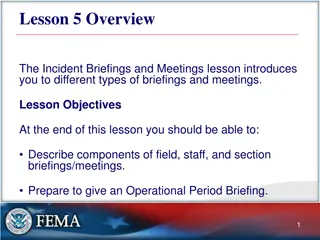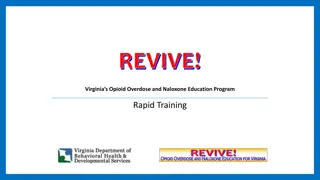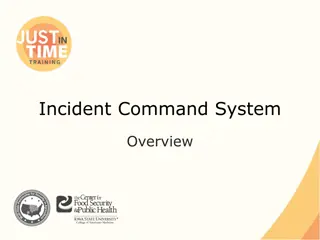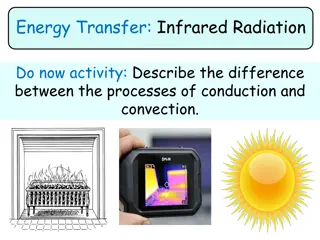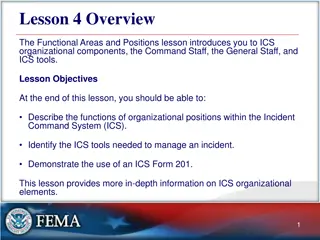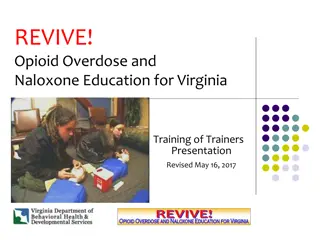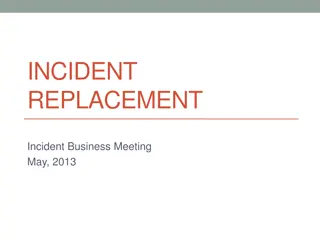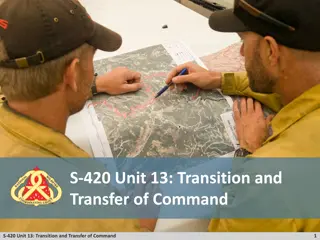The Therac-25 Incident: Lessons Learned from Radiation Overdoses
Six patients experienced radiation overdoses during cancer treatment due to programming errors in the Therac-25 unit. This led to advancements in system safety practices, spurred by regulatory agency interventions and user group input. The problem was diagnosed as a race condition, highlighting the importance of thorough testing and error prevention in medical technology.
Download Presentation

Please find below an Image/Link to download the presentation.
The content on the website is provided AS IS for your information and personal use only. It may not be sold, licensed, or shared on other websites without obtaining consent from the author. Download presentation by click this link. If you encounter any issues during the download, it is possible that the publisher has removed the file from their server.
E N D
Presentation Transcript
Therac-24 The Upshot
Summary/Overview Six patients received radiation overdoses during cancer treatment by a faulty medical linear accelerator, the Therac-25 unit Overdoses caused by programming errors (that produced race conditions ) Case has led to advancements in systems safety (testing, computer control, reporting) Industry response was inadequate Prompting and input by regulatory agencies (FDA) and User Groups were instrumental in finding causes of and remediating the accidents
Hagers perspective Hager knew that something was clearly wrong and attacked the problem by working with the operator after the April 11thincident to recreate the events leading to the overdose The operator remembered the sequence of data entry procedures and repeated over and over the procedure until she could consistently reproduce the error They correctly diagnosed the problem as a race condition produced by a flaw in the software programming.
The Problem Race Condition (From Huff and Brown) Produced the two deaths in ETCC Discovered and duplicated by Hager working with machine operator Those with programming experience can consult Computing Cases for detailed explanation Philosophers and forks Philosophers eat and think. They also share forks with those sitting on either side. They need two forks to eat properly. (They re messy) To solve the problem of scarce resources, philosophers need to coordinate thinking and eating. Imagine Philosophers A, B, and C sitting at a round table and sharing the forks on either side of their plates. While Philosopher B is thinking, Philosophers A and C are eating While Philosopher B is eating (and using the forks on either side), Philosophers A and C are thinking. A race condition occurs when the coordination breaks down and Philosophers A, B, and C all simultaneously reach for their forks. If A and C get there first, B will starve. (Philosophers are notoriously unable to adapt to changing circumstances because they respond only to a priori conditions.)
Disseminating the results Having identified the problem, it is now possible to return to the chronology Different sites began to share their experiences Operators held special sessions at conferences on their experiences FDA required a CAP from AECL Corrective Action Plan
Date Event May 1 1986 Second ETCC victim dies May 2 FDA declares T-25 defective and their response (alterations) inadequate. FDA demands a CAP from AECL AECL produces first CAP June 13 July 23 FDA requests more information from AECL August First Therac user group meeting August First ETCC victim dies and family files lawsuit
Date Event Sept 26, 1986 AECL provides more information to FDA Oct 30 FDA requests still more information Nov Physicists and engineers from FDA s CDRH conduct a technical assessment of T-25 unit in Canada AECL submits second CAP revision Nov 12 Jan 17, 1987 Second patient overdose at Yakima Jan 19 AECL issues hazard notification to users. Visually confirm position of turntable
Date Event Jan 26, 1987 Conference call between AECL quality assurance manager and FDA. AECL sends FDA revised test plan. AECL calls T users with instructions on how to avoid beam on when turntable is in field light position. AECL announces additional changes to T Feb 3 February 1987 Therac-25 units in Canada and US are taken out of service until AECL completes new CAP March 5 AECL completes third CAP. FDA (April) asks for more information) April 13 AECL sends update of CAP plus list of nine items requested by users at march meeting May 1 AECL sends fourth revision of CAP to FDA
Date Event May 26 FDA approves fourth CAP subject to testing and analysis AECL sends final test plans to FDA along with safety analysis Third T-25 user group meeting June 5 July July 21 AECL sends final (fifth) CAP revision to FDA Jan 28, 1988 Interim safety analysis report issued from AECL Nov 3, 1988 Final safety analysis report issued
Therac-25 Concepts Informed Consent, Safety, and Risk
Informed Consent Consent of risk taker to understand the nature and breadth of the risk he or she is being asked to take. Context: Understanding and bearing the risk associated with business products and technologies
Other meanings of FIC Right of students to understand the nature of the course they are about to take and the correlative duty of the professor to provide this information Right of Toysmart customers to consent to the transfer of their PII (Information Transfer) Active, opt-in consent as opposed to passive opt-out consent Devil is in the details subjects, to the degree that they are capable, be given the opportunity to choose what shall or shall not happen to them. This opportunity is provided when adequate standards for informed consent are satisfied. (Scientific Experiments)
Free and Informed Consent is a Right Essential in that we cannot exercise autonomy without understanding and participating in the determination of acceptable risk Vulnerable in that information is often technical and that other interests may be tempted to cover it up Feasible in that correlative duties do not deprive duty holder of something essential if distributed through legal system (tort and criminal), government regulation, professional self-regulation, and business self-regulation If risk information is covered up, this may trigger an obligation to notify proper authority (=whistle-blowing)
Conditions (From Belmont Report) Information: research procedure, their purposes, risks and anticipated benefits, alternative procedures (where therapy is involved), and a statement offering the subject the opportunity to ask questions and to withdraw at any time from the research. Comprehension: manner and context in which information is conveyed is as important as the information itself. Voluntariness: an agreement to participate in research constitutes a valid consent only if voluntarily given. This element of informed consent requires conditions free of coercion and undue influence.
Reworked for Therac-25 Context Information Patients/public have right to understand the nature of the technology and the risks it implies. Comprehension This information must be presented in a way that makes use of common, shared understandings; should be expressed in non-technical vocabulary Voluntariness Patients/public have right to participate in the collective decision as to the acceptability of the risk. Participation should not be impeded (non-interference) Participation should be elicited by providing procedures (opportunity)
Safety A thing is safe if, were its risks fully known, those risks would be judged acceptable in light of settled value principles. (Martin/Schinzinger, Engineering Ethics, 108) Safety and risk are different sides of the same coin One is defined in terms of the other Settled value principles makes safety a matter of public policy. Government plays a role. So does business. Most importantly, so do members of the public
Public those persons whose lack of information, technical knowledge, or time for deliberation renders them more or less vulnerable to the powers an engineer wields on behalf of his client or employer Michael Davis. Thinking Like An Engineer The public is in an especially vulnerable position. They stand subject to the risk. But they do not participate in the project that generates the risk The public has the right to free and informed consent. This right is vulnerable if risk information does not get to them, if the risk information is too complicated for them to appreciate, or no provisions have been taken to include them in the collective risk acceptability (=safety) decision.
Risk The other side of the coin Risk and safety are correlative and defined in terms of one another A risk is the potential that something unwanted and harmful may occur. (MS 108) Risk has four dimensions (assessment, management, perception, and communication) Since risk is the probability of harm and probability implies uncertainty (lack of complete knowledge), the ethics of risk lies in how this uncertainty is communicated and distributed. For example, does a government regulatory agency approve a product unless it is proven harmful . Or does it withhold approval from a product until it is proven completely safe. In the first, the burden of uncertainty falls on the public exposed to risk, in the second on the manufacturer who can t reap benefits from selling the uncertainly risky product.
Risk Assessment The scientific and exact process of determining the degree of risk Animal Bioassays Animals exposed to risk fact at intense level for short period of time Projection from animal physiology to human physiology and from short term/intense exposure to long term/less intense exposure Epidemological Studies Comparison between populations exposed to risk and populations not exposed to risk Search for significantly higher risk ratio. Three-to-one not generally significant. Six-to-one is significant Ethics of Risk Since there is uncertainty in risk assessment, an ethical issue arises as to how that uncertainty is distributed
Risk Communication Results of risk assessment are technical and subject to different interpretations Public has a right to informed consent vis a vis risk To consent to take a risk (or withhold consent) they must understand the risk and be able to make a coherent consent decision This raises issues in risk communication Clear communication Comprehensive communication (not leaving out anything significant) Communication that takes into account the perspective from which the public will perceive the risk
Risk Perception The public perceives risk according to a clear perspective This renders risk perception rational because predictable (to a certain extent) Factors which influence public perception of a risk s acceptability Voluntariness Expected benefits Control over risk Minimal dread factor Minimal unknown factor
Risk Management Political process of determining if a certain degree of risk is acceptable according to a community s settled value principles Value principles are identified via a process of deliberative democracy which respect the meta- norms of reciprocity, publicity, and accountability Community s identify small scale project for experimental analysis These validate settled values These also help to determine if larger scale action is acceptable
Sources Nancy G. Leveson, Safeware: System Safety and Computers, New York: Addison-Wesley Publishing Company, 515-553 Nancy G. Leveson & Clark S. Turner, An Investigation of the Therac-25 Accidents, IEEE Computer, 26(7): 18-41, July 1993 www.computingcases.org (materials on case including interviews and supporting documents) Sara Baase, A Gift of Fire: Social, Legal, and Ethical Issues in Computing, Upper Saddle River, NJ: Prentice-Hall, 125-129 Cranor, Carl. (1993). Regulating Toxic Substance: A Philosophy of Science and the Law. Oxford, UK: Oxford University Press Mayo, D.G. and Hollander, R.D. (1991). Acceptable Evidence: Science and Values in Risk Management. Oxford, UK: Oxford University Press. Chuck Huff and Richard Brown. Integrating Ethics into a Computing Curriculum: A Case Study of the Therac-25 Available at www.computingcases.org (http://computingcases.org/case_materials/therac/supporting_docs/Huff.Brown.pdf) Accessed Nov 10, 2010
